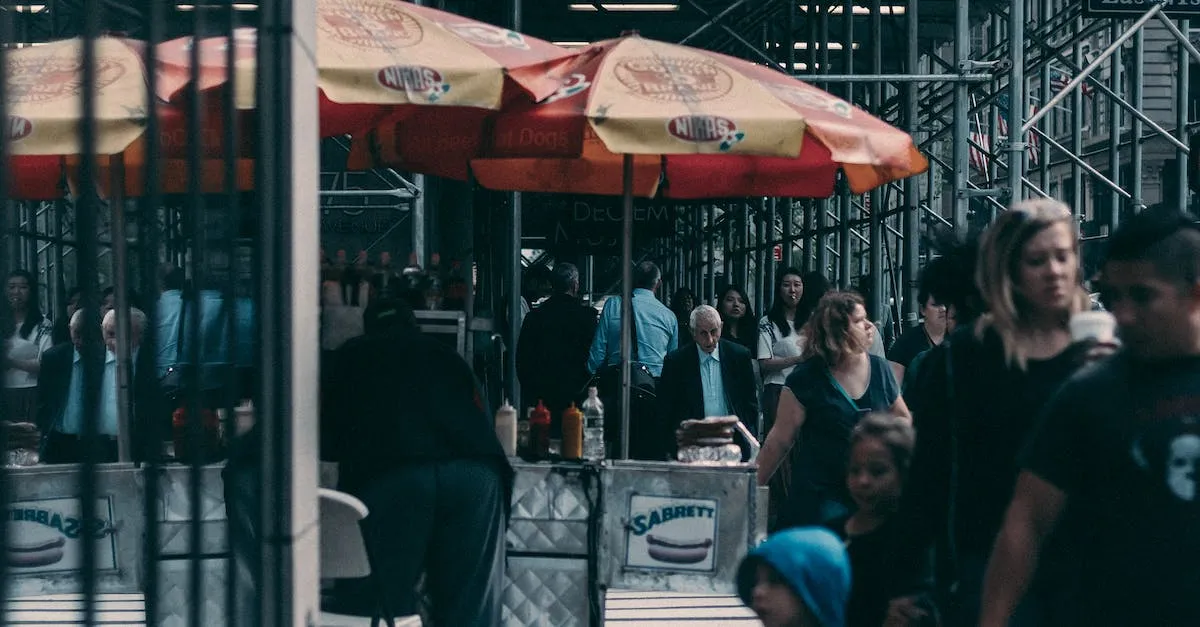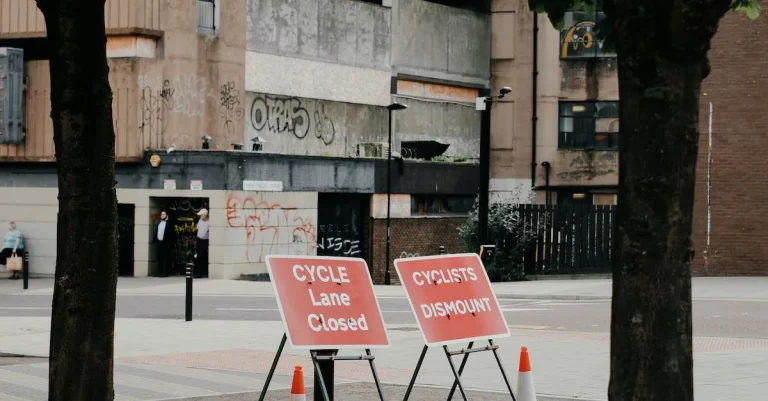Why Is There So Much Scaffolding In New York City?
As one of the most iconic skylines in the world, New York City is also known for the copious amount of scaffolding enveloping many buildings and sidewalks. The forest of scaffolding spanning block after block is both a familiar and perplexing sight. So why exactly does New York have so much scaffolding?
If you’re short on time, here’s a quick answer: New York’s old building stock and stringent facade inspection laws require much of the city’s scaffolding. It ensures building safety but also draws complaints over costs and appearance.
History of Scaffolding Laws in NYC
New York City is known for its iconic skyline, filled with towering skyscrapers and construction sites. It’s no wonder that there is so much scaffolding in the city – it’s a necessary part of the construction process to ensure safety for workers and pedestrians.
But why is there such a prevalence of scaffolding in NYC? Let’s take a look at the history of scaffolding laws in the city to better understand the reasons behind it.
Early 20th century reforms
In the early 20th century, New York City experienced a rapid increase in the construction of tall buildings. However, with this growth came a rise in accidents and fatalities related to construction. To address these concerns and improve worker safety, the city implemented a series of reforms regarding scaffolding regulations.
One significant reform was the establishment of the Scaffold Safety Law in 1921. This law made it mandatory for construction companies to provide proper and secure scaffolding for workers. It also held employers responsible for any injuries or fatalities that occurred due to inadequate scaffolding.
These early reforms laid the foundation for the stringent scaffolding laws that are still in place today.
The 1980 Façade Inspection Safety Program
In 1980, New York City experienced a tragic incident when a piece of façade from a building fell onto a pedestrian, resulting in their death. This event led to the creation of the Façade Inspection Safety Program (FISP), formerly known as Local Law 11.
The FISP requires building owners to have their facades inspected by a licensed professional engineer or architect every five years. This inspection includes a thorough examination of the building’s exterior, including its scaffolding and other support structures.
Any necessary repairs or improvements must be made to ensure the safety of pedestrians and workers.
The FISP has played a crucial role in ensuring the proper maintenance and safety of scaffolding in New York City. It has helped prevent accidents and fatalities by identifying and addressing potential issues before they become major hazards.
Why Owners are Required to Install Scaffolding
Owners in New York City are often required to install scaffolding for various reasons. These reasons include conducting facade inspections, building repairs and renovations, and major construction projects.
To conduct facade inspections
One of the main reasons scaffolding is installed is to conduct facade inspections. Facade inspections are crucial for ensuring the safety and structural integrity of buildings. Scaffolding provides a safe and stable platform for inspectors to access different parts of the building’s exterior.
This allows them to closely examine the facade, identify any potential issues, and recommend necessary repairs or maintenance.
For building repairs and renovations
Scaffolding is also commonly used for building repairs and renovations. Whether it’s fixing a broken window, repointing brickwork, or painting the exterior, scaffolding provides workers with a secure platform to reach higher areas of the building.
It ensures their safety while allowing them to carry out the necessary tasks efficiently. Scaffolding also helps protect pedestrians and nearby structures from any falling debris or materials during the repair or renovation process.
For major construction projects
In the case of major construction projects, scaffolding becomes even more essential. Whether it’s constructing a new building, adding additional floors, or making structural changes, scaffolding provides a stable and secure working platform for construction workers.
It allows them to safely access different levels of the building, transport materials, and carry out their tasks effectively. Scaffolding also plays a crucial role in ensuring the safety of workers and the general public by preventing accidents and minimizing the risk of falls from heights.
Scaffolding Controversies and Criticisms
High costs for property owners
Scaffolding is a common sight in New York City, and it’s no secret that property owners bear the brunt of the costs associated with it. The expenses of putting up and maintaining scaffolding can be substantial, especially for smaller building owners.
According to a report by the New York City Department of Buildings, the average cost of erecting scaffolding can range from $40,000 to $60,000 per linear foot of building frontage. These expenses can be a significant burden for property owners, particularly when the scaffolding remains in place for extended periods.
Impact on small businesses and tourism
The prevalence of scaffolding in New York City can also have a negative impact on small businesses and the tourism industry. With scaffolding blocking storefronts and obstructing signage, it becomes difficult for businesses to attract customers and generate foot traffic.
This can result in decreased revenues and even closures for some businesses. Additionally, the scaffolding can detract from the overall aesthetic appeal of the city, potentially dissuading tourists from visiting certain areas.
This can have a ripple effect on the local economy and tourism industry as a whole.
Eyesore and quality of life issues
One of the most common criticisms of scaffolding in New York City is its perceived impact on the city’s aesthetic appeal and quality of life. The long-term presence of scaffolding can create an eyesore, obstructing views of buildings and altering the character of neighborhoods.
The scaffolding can also create shadows and reduce natural light, making streets and sidewalks feel dark and less inviting. Additionally, the noise and inconvenience caused by construction activities associated with scaffolding can disrupt the daily lives of residents and workers in the affected areas.
Recent Scaffolding Reform Efforts
Over the past few years, there have been significant efforts to address the issue of excessive scaffolding in New York City. These reform efforts aim to improve safety, reduce the amount of scaffolding on the streets, and streamline the inspection and maintenance process.
New regulations on inspection cycles
One of the key aspects of the recent scaffolding reform efforts is the implementation of new regulations on inspection cycles. Previously, scaffolding structures were required to be inspected every five years.
However, in an effort to ensure that scaffolding is safe and well-maintained, the city has now shortened the inspection cycle to every three years. This more frequent inspection schedule helps identify and address any potential safety issues in a timely manner.
Improved scaffolding materials
Another important aspect of the recent reform efforts is the use of improved scaffolding materials. Traditional scaffolding structures were often made of wood, which required frequent maintenance and had a limited lifespan.
However, newer materials such as steel and aluminum are now being used, which are more durable, require less maintenance, and have a longer lifespan. This not only improves safety but also reduces the need for frequent scaffolding installations and repairs.
Business and resident advocacy
Businesses and residents in New York City have also played a crucial role in advocating for scaffolding reform. Many business owners have expressed concerns about the negative impact of long-term scaffolding installations on foot traffic and sales.
Similarly, residents have raised issues about the aesthetic impact of scaffolding structures on the city’s skyline. As a result, there has been increased pressure on local authorities to find solutions that balance safety requirements with the needs and concerns of businesses and residents.
Conclusion
While scaffolding provokes complaints from many New Yorkers, it also serves an important purpose in keeping aging buildings safe in a dense urban environment. Recent reforms strive to improve standards and practices around scaffolding installations. However, the abundance of scaffolding will likely remain a reality in New York City as long as inspections and repairs are required by law.








